

Tunisian photographer Jawher Ouni was born in the small city of Sidi Bouzid, but he grew up miles away on the coast. As part of a recent collaborative project with other Tunisian artists, he returned to his birthplace with his camera, and the love, care and respect he has always felt for Sidi Bouzid bursts out of the photos he took there. He tells writer Sarah Souli how he captured the essence of a place he’s always felt so connected to.
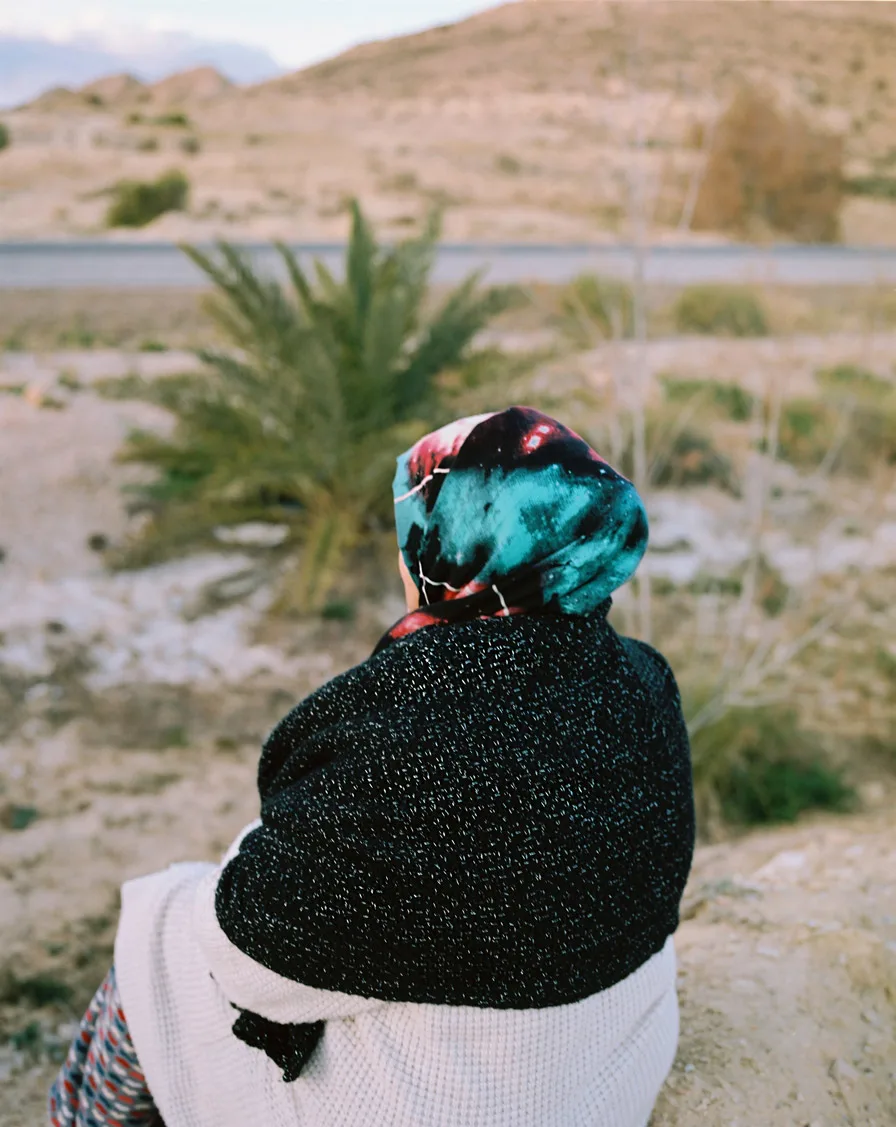
When most people hear of Sidi Bouzid, a small city in the center of Tunisia, it’s usually in reference to the Tunisian Revolution and the ensuing Arab Spring that swept across the Middle East in 2011. It was in this city that a young man named Mohamed Bouazizi set himself on fire after enduring years of economic hardship and humiliation, a cataclysmic event that would shake the region for the next decade. But such a legacy is also a burden: It distills an entire culture into a singular narrative, one image. Other potential stories are swept to the side like crumbs off a table.
“Of course I feel very proud that the revolution came from this region,” says Jawher Ouni, a Tunisian photographer whose newest body of work took him back to Sidi Bouzid, where he was born. “But my relationship with the city is much deeper.”

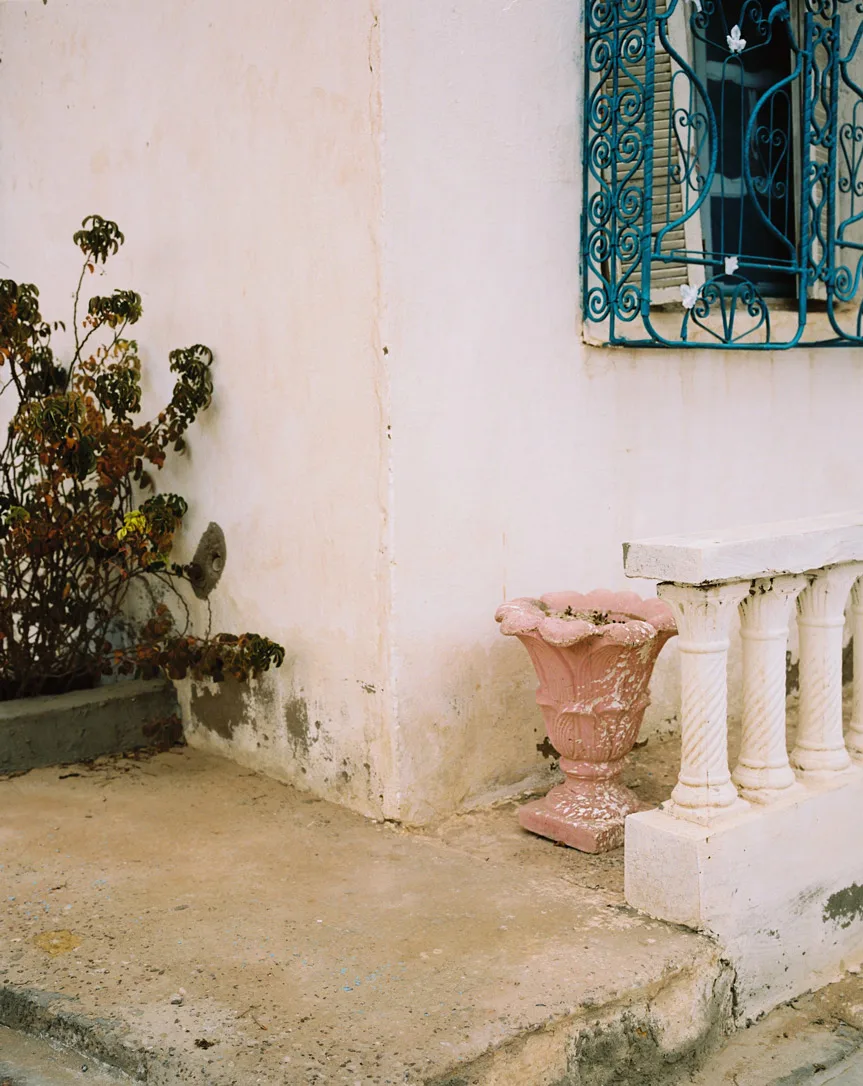
I was always waiting to go back there, because it represented liberty for me.
Now based in France, Jawher grew up in Korba, a seaside town on the Mediterranean coast, some 200 kilometers away from Sidi Bouzid. His father is a calligrapher and artist, and was the first person he photographed back in 2007. Art was always close by in the house, but home – well, that was far away in Sidi Bouzid.
“I was always waiting to go back there, because it represented liberty for me,” Jawher says. Aside from his parents, the rest of his family lived in the region, working the land. “I dreamed of being like them. It was so free there. There were fruits growing everywhere, people were happy, and they were detached from the media. The day I took a camera there, they had no idea what it was.”
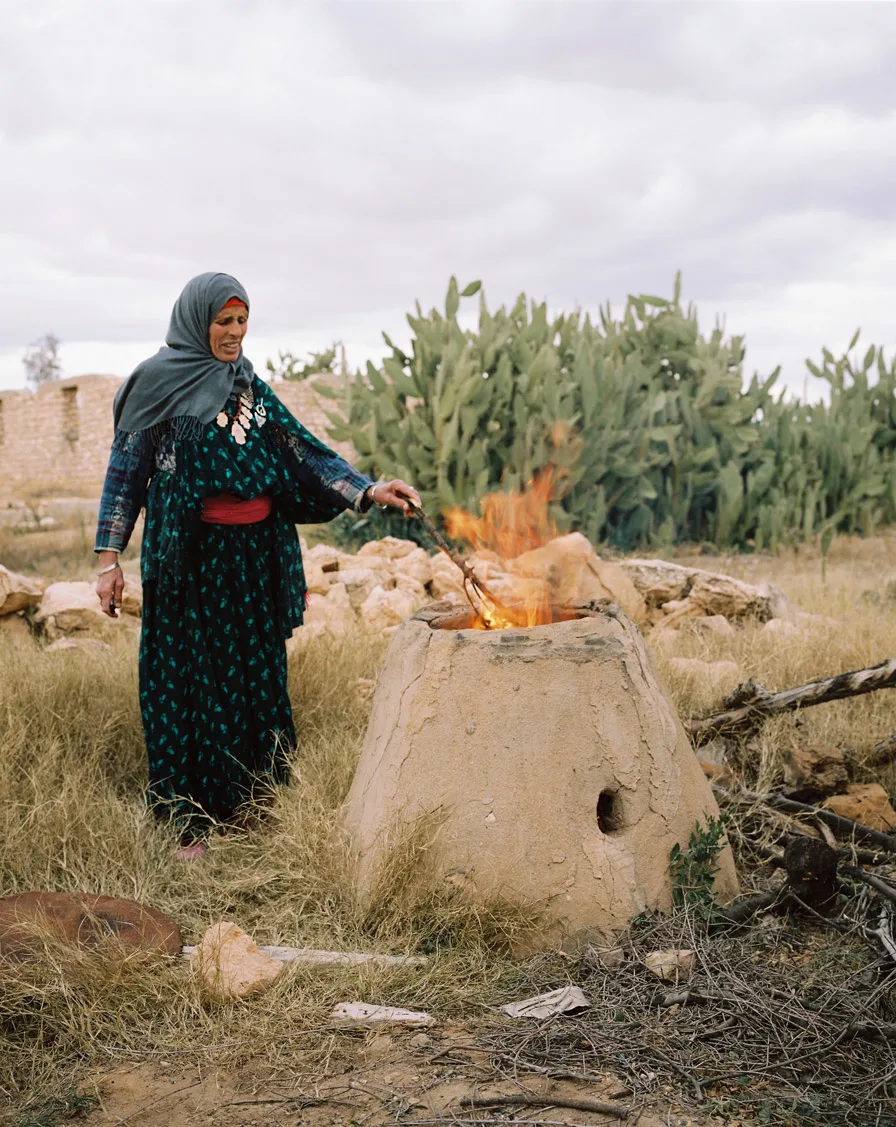
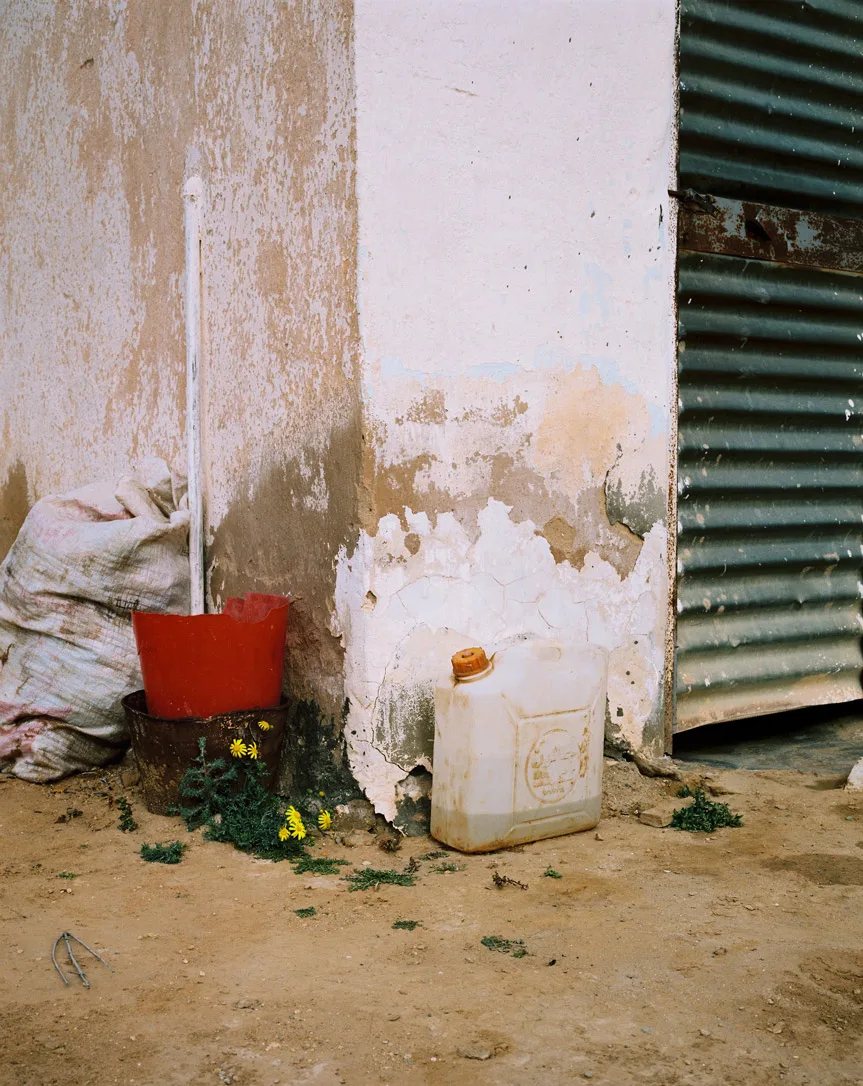
It’s this profound love and appreciation for Sidi Bouzid that he communicates through his photography. In January 2019, Jawher spent a month back in his ancestral village just outside the city, photographing his family, the occasional villager and the landscape. The body of work is published, along with works from several other Tunisian artists, in the book The Same Moon Above Us: A Tunisian Tale, edited by Estelle Marois. For the most part, Jawher’s images are simply composed, their honesty laid bare. The same elements are repeated: the copious amounts of wild cacti, the white-washed cement architecture, the dusty asphalt roads.
“When I started to take photos, I wanted to capture all these details, all these people. There’s a simplicity here, but it’s a very complex simplicity,” Jawher explains. “That’s what I wanted to catch in the photos – this environment of liberty and beauty and simplicity. I wanted to pay homage to all these people that I’ve known forever.”
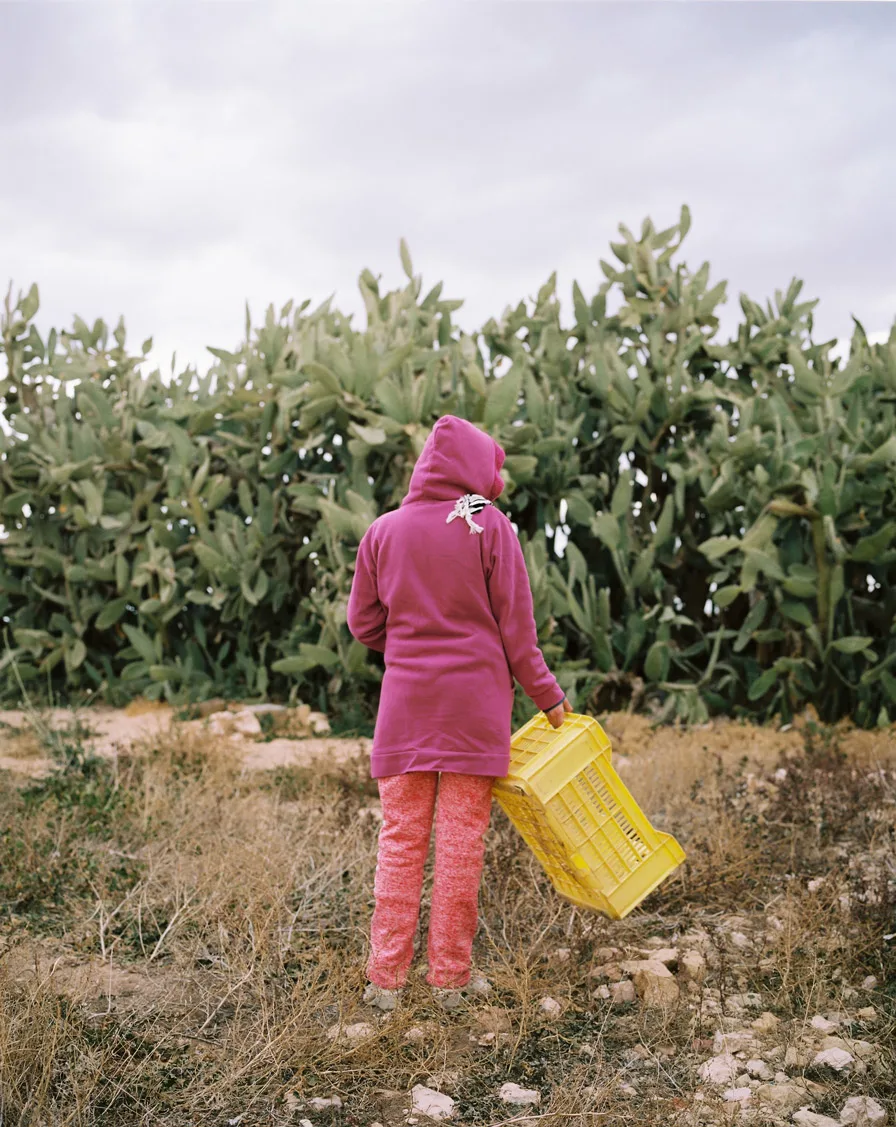
This is documentary photography, but it also has a deeply autobiographical feel. The majority of the subjects in Jawher’s photos are his own family members. In one shot, his aunt prepares traditional tabouna bread in a clay oven, the orange flames casting a glint off her jewelry. In another, a young girl dressed in a hot pink tracksuit stands in front of a wall of cacti. She’s holding an empty yellow crate and though her head is slightly turned, her back is a firm line cutting through the green plant. She is Jawher’s cousin, and the composition of the photo makes her look like a flower about to be picked.
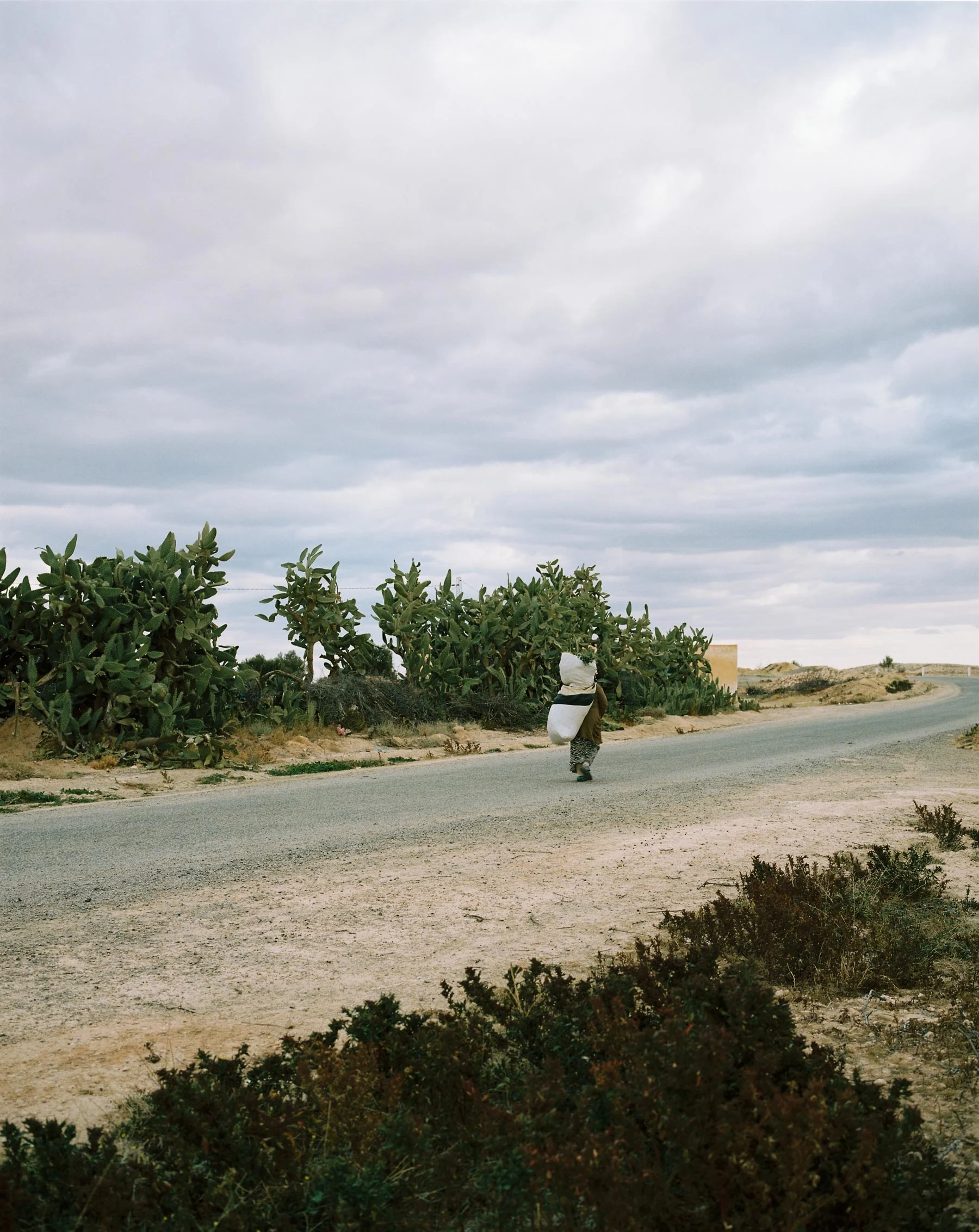
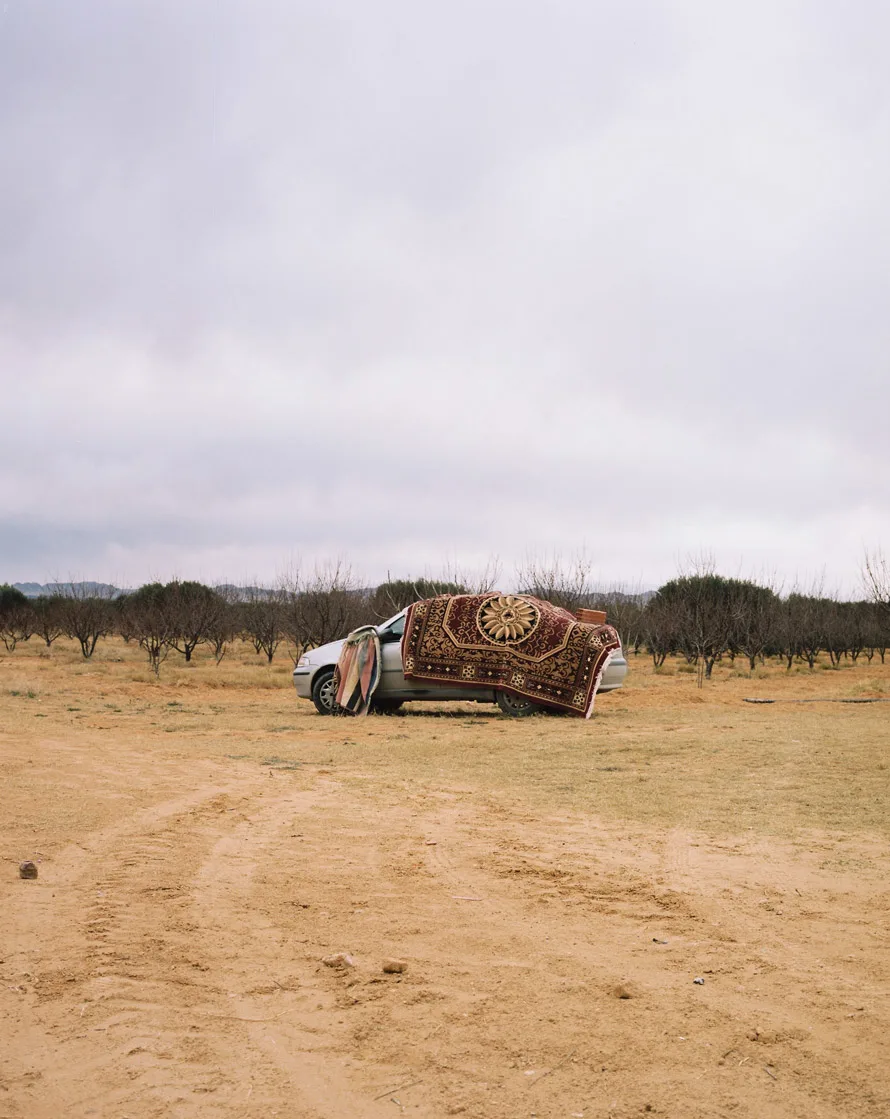
When Jawher speaks of Sidi Bouzid, there is a reverence in his voice, and that quality translates through his work. There is nothing voyeuristic or reductionist about his photos; they are taken with love and respect. Looking through his work, I start to notice hugs everywhere: a carpet draped over a gray sedan, a woman walking through shrubs that frame either side of her. This thread of love woven through all his photos is what also allows Jawher to photograph other aspects of Tunisian life that are often reduced or politicized.
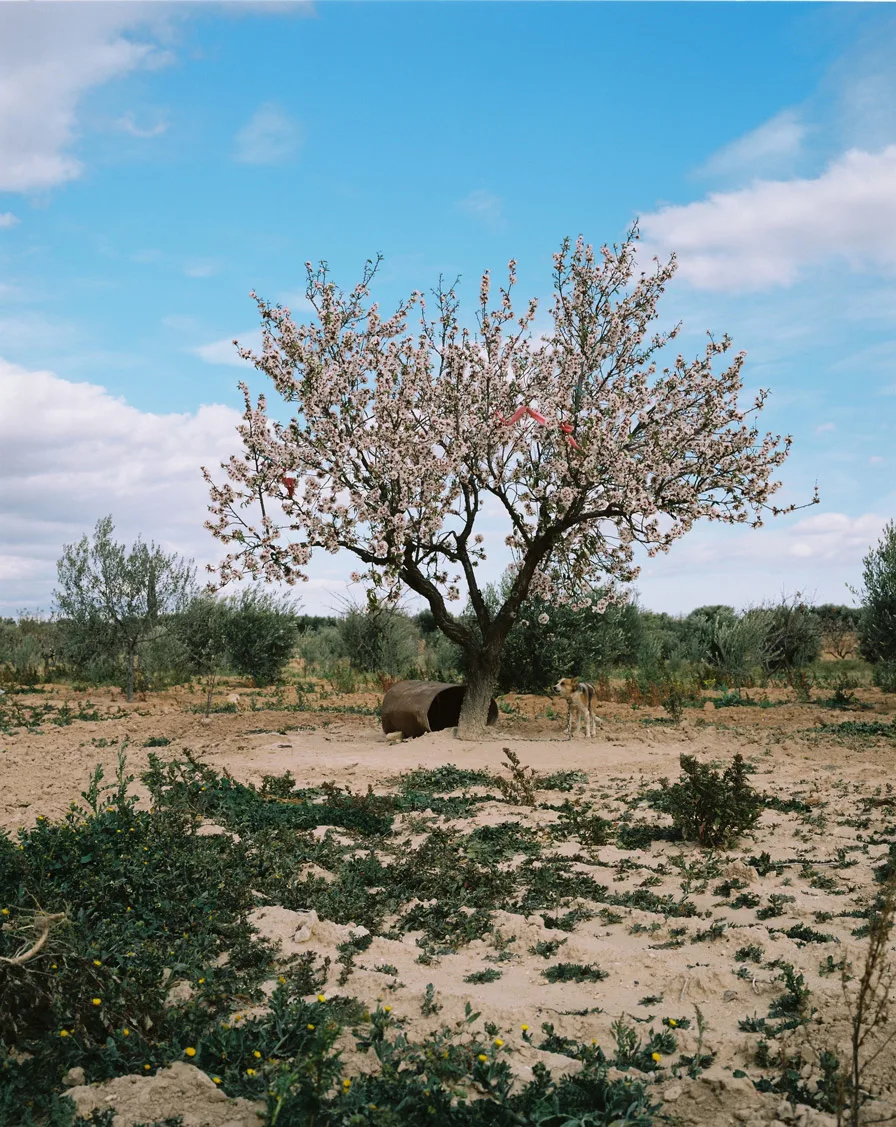
Whether we like it or not, both the good and bad in a place constructed our reality.
In one photo, a piece of plastic has wormed its way into the branches of a tree. This is a common sight in Tunisia, but taking photos of plastic can have a deeper connotation. A few years ago, I was working in Zarzis, a southern Tunisian town, when I noticed an Italian man stopping to take some photos of the debris that washed up on the shore. A Tunisian woman ran over to him, incensed. “That’s not what Tunisia is,” she told him, hyper aware that this one image could become the simplistic visual narrative: Tunisia, the poor country with a trash problem. But of course, in the same way that Sidi Bouzid isn’t just the birthplace of the Arab Spring, Tunisia also does have an issue with littering.

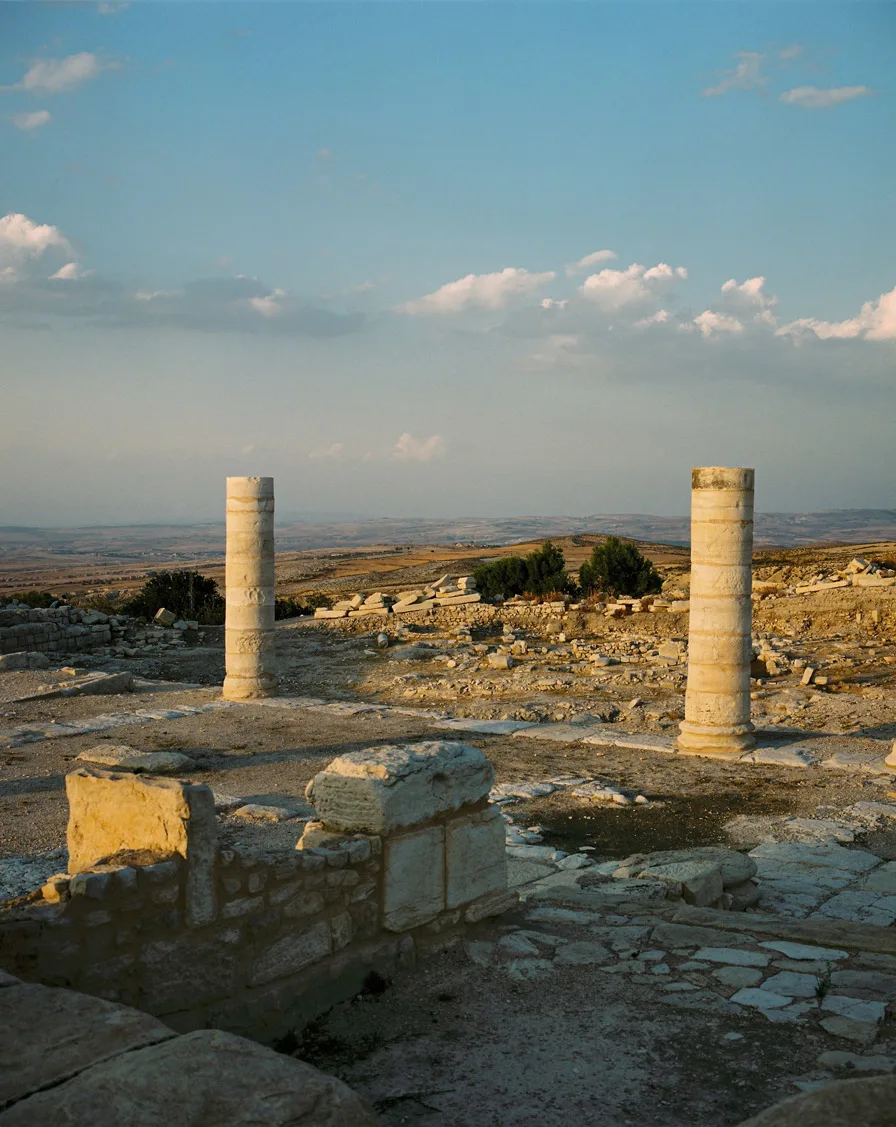
I tell this story to Jawher and he laughs. “There are places like this, that are filled with plastic or waste, but I like to see them,” he says. “I don’t know how to explain it. It’s not that I like that it’s dirty, but I just see it as part of the landscape. And whether we like it or not, the landscape is what constructed our reality. My identity was created on these images. It’s the beauty of the dirt.”

Check out The Same Moon Above Us: A Tunisian Tale, the book featuring the works of eight photographers from Tunisia and the diaspora, who explore multiple ways of seeing the here and the everywhere.

